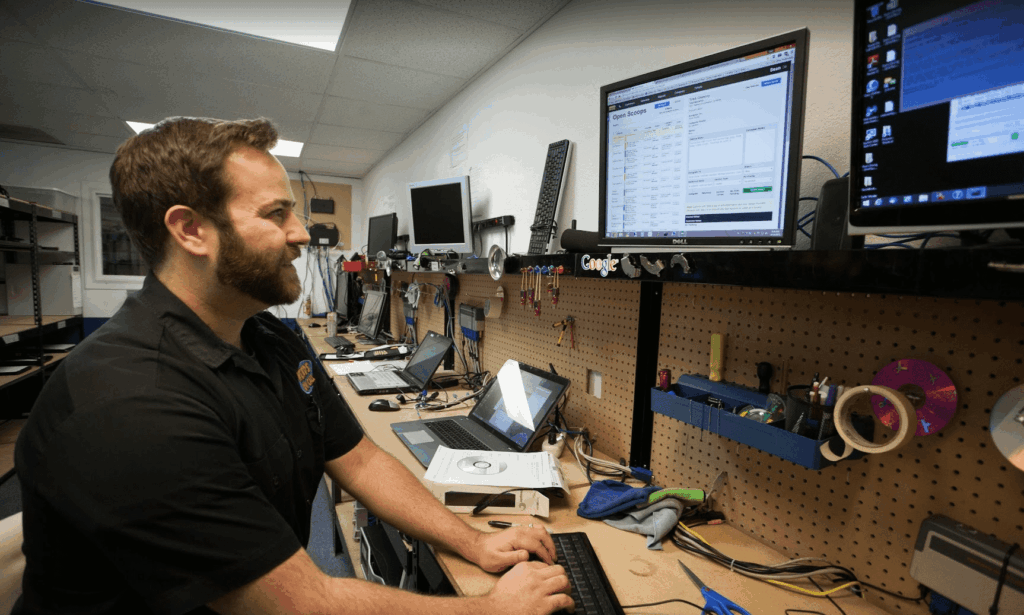If you’ve ever wished you could summon a computer wizard to appear in your living room, wave a magic wand, and fix your laptop in seconds—good news. That’s essentially what remote computer support does. Instead of a tech driving across town or you lugging your PC into a shop, a technician connects securely over the internet, takes control (with your permission, of course), and solves your digital woes without ever stepping into your house.
Sounds convenient, right? And it is. The world is increasingly relying on remote access services for everything from streaming movies to running businesses—so why not for fixing stubborn tech issues?
But the big question remains: Is remote computer support actually safe? In this article, we’ll explore how it works, what it can (and can’t) fix, the advantages, the lurking dangers of tech support scams, and how to find a trustworthy provider so you’re not left handing the keys to your digital castle over to a tech support scammer.
Need Remote Computer Support?
How Does Remote Computer Support Work?
Remote computer support uses special remote access tools like TeamViewer, Splashtop, or LogMeIn. These programs allow a technician to temporarily view and control your computer. But don’t worry—this isn’t some hacker-in-a-hoodie scenario. You have to grant permission, and you can see everything they’re doing in real-time.
Think of it like inviting a plumber into your home: you open the door, they fix the pipes while you watch, and when they leave, the door locks behind them. Only in this case, the pipes are your computer settings, and the plumber is a tech professional with a knack for navigating Windows menus faster than you can say “Where’s the Control Panel again?”
Security is built in, too. Sessions are encrypted, and you can end them at any time. The connection is only active while you allow it. Once it’s over, the technician can’t return without your permission.
Advantages of Remote Computer Support
So why would you choose remote computer support over the traditional drop-it-off-and-wait-a-week method? Lots of reasons:
- Time-Saving Efficiency – Nobody enjoys downtime. Remote sessions can solve problems in minutes, saving you from hours of frustration and three cups of stress-induced coffee.
- Cost Efficiency – Because there’s no travel time, gas, or on-site visit fees, remote computer support is often more affordable than in-home service.
- 24/7 Availability – Computers don’t care about business hours. They crash at night when you’re trying to file taxes, or Sunday morning when you’re gaming. Many remote providers offer 7-days-a-week service so help is always a click away.
- Access to Global Expertise – With remote service, you’re not limited to the guy at the nearest strip mall repair shop. You can tap into a wide network of specialized technicians from anywhere in the world.
- Environmentally Friendly – No cars driving around, no wasted fuel—just clean, green, digital problem-solving. Saving your computer and the planet? That’s a win-win.
What Can Be Fixed During Remote Computer Support
A surprising number of headaches can be solved remotely. Some of the most common include:
- Slow computer performance, including sluggish startup times.
- Email issues, like messages that won’t send or arrive.
- Lost passwords and login problems.
- Malware infections and virus removal.
- Data backup and retrieval, including help setting up cloud storage.
- Document formatting, hard drive organization, and freeing up space.
- Printer malfunctions, usually driver or software-related.
Basically, if it’s a software issue, there’s a good chance it can be fixed without anyone touching the actual hardware.
What Can’t Be Fixed With Remote Computer Support
Unfortunately, not everything can be solved with a keyboard and mouse from afar. Some problems still require hands-on work:
- Hardware issues like broken screens, fried motherboards, or a laptop that took one too many coffee spills.
- Power failures and faulty components.
- Physical cleanings, like removing dust bunnies clogging up your fan.
When things go beyond software, in-home or in-shop service is the way to go. Remote techs can try to diagnose the problem, but they can’t exactly mail you a new hard drive through the screen.

The Risk of Tech Support Scams
Here’s the not-so-fun part: tech support scams are real, and scammers love pretending to be legitimate tech helpers. They use remote access computer tools for evil instead of good.
How Do They Work?
- You get a scary pop-up warning that your computer is infected.
- Or you receive a phone call from “Microsoft Support” telling you your PC is compromised.
- They pressure you to act fast, then ask you to install a remote access tool.
Once you grant them access, tech support scammers can:
- Steal personal data.
- Install actual malware.
- Charge you for fake “repairs.”
- Lock you out of your own machine.
Basically, it’s the digital version of inviting a “plumber” into your house who then steals your TV and eats all your snacks.
Want to learn more about how to spot and avoid these scams? Microsoft has an excellent guide on protecting yourself from tech support scams.
Is Remote Computer Support Safe?
Here’s the good news: when done through a trusted provider, remote computer support is absolutely safe.
Legitimate providers use:
- Encryption to protect your data.
- User control, meaning you can see everything happening.
- Limited sessions that end when you close the connection.
The difference between a safe experience and a scam comes down to who you let in. Think of it like giving someone your house keys—trusted family member? Fine. Random stranger offering “free home inspections” at midnight? Not so much.
How to Find a Remote Computer Support Company You Can Trust

Finding the right provider is a must. Here’s what to look for:
- Reputation matters. Check reviews, Better Business Bureau ratings, and word-of-mouth recommendations.
- Clear contact info. Legit companies have professional websites and transparent pricing.
- No cold calls. Real providers don’t call you out of the blue claiming your computer is infected.
- Flexible support plans. Options like pay-per-incident or monthly memberships show professionalism.
When in doubt, trust your gut. If something feels off, it probably is.how.
Final Thoughts
So, is remote computer support safe? Yes—when you choose a reputable provider. It’s convenient, cost-effective, environmentally friendly, and can save you from endless tech headaches. Just remember: while real technicians are here to help, tech support scams are out there trying to trick you into handing over control.
Stay alert, do your research, and only trust verified companies. That way, you get the magic of instant computer help without the nightmare of a scammer rifling through your files.
If you want peace of mind, remember that Nerds on Call offers secure and reliable remote computer support. We’ll solve your computer problems with reliable, risk-free remote support from a team you can count on.





